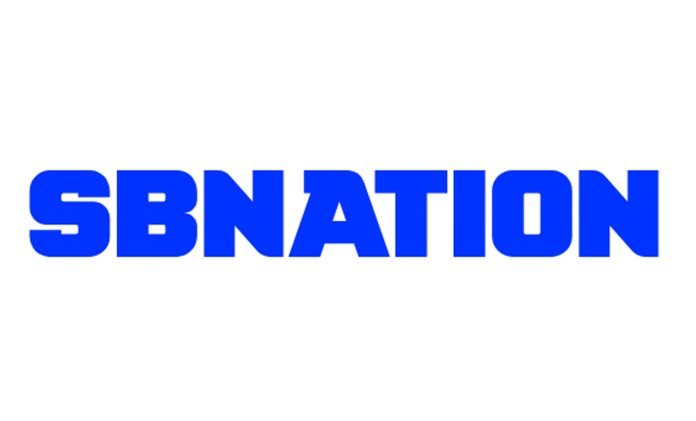
Daniss Jenkins made NBA fans learn his name when he splashed a corner three at the buzzer to force overtime in the Detroit Pistons’ win over the Washington Wizards last week. A few days later, he hit a 52-foot bomb beyond halfcourt to beat the third quarter buzzer against the 76ers that was one of the league’s top plays of the week. Along the way, Jenkins helped lead Detroit’s MASH units to wins over Chicago and Philadelphia despite the team missing seven key players in both games, including likely All-Stars Cade Cunningham and Jalen Duren.
The Pistons are surging at the top of the Eastern Conference to open the season, and Jenkins has emerged as the NBA’s most unlikely contributor. He’s currently playing on a two-way deal that guarantees him only $85K this season and puts a time limit on his services. Just getting that far was an enormous accomplishment for someone who was playing JUCO ball only four years ago. What he’s doing with this opportunity is nearly unprecedented.
In an age where recruiting rankings and pedigree carry weight even into the NBA, Jenkins is scraping out a career from the lowest levels of the sport to turn into a key piece on a team with dreams of making the NBA Finals. None of this makes any sense, and the story keeps getting better.
Jenkins is averaging 20.2 points and 7.2 assists on 50/44/80 shooting splits over the last five games while playing nearly 35 minutes per night. He’s putting up numbers that haven’t been matched for a journeyman since Jeremy Lin’s iconic run with the Knicks. The Pistons had a big need for a secondary creator after Dennis Schroder left for the Sacramento Kings in free agency and former top-five pick Jaden Ivey suffered a knee injury to start the season, and Jenkins has come out of nowhere to fill it.
Who is Daniss Jenkins and where did he come from? His story starts with earning the belief of one of the most iconic basketball coaches of the last 40 years: Rick Pitino. It’s all been up from there.
Jenkins was one of the best players in Dallas coming out of high school, but he wasn’t really on national radars. He took a DI offer from Pacific from head coach Damon Stoudemire, and quickly earned a starting spot. Jenkins was an All-Freshman Team selection in the WCC in 2019-2020, then became the team’s leading scorer as a sophomore. Stoudemire then abruptly left the team to take an assistant coaching job with the Boston Celtics, and interest from other schools wasn’t really there.
He enrolled at Odessa College back home in Texas and quickly rebuilt his reputation. He was named a First-Team NJCAA All-American and led his team to the Elite Eight in the NJCAA postseason. As it happened, he caught the eye of Rick Pitino, who was rebuilding his own reputation at Iona in the low-DI Metro Atlantic Athletic Conference after being booted from Louisville for his role in the program’s explosive recruiting scandals.
Pitino had already struck gold by landing former two-sport star Walter Clayton Jr. as a high school recruit out of Florida by allowing him to focus solely on basketball. He added Jenkins as Clayton entered his sophomore year, and the Gaels quickly emerged as a dominant team that won the conference and earned a trip to the NCAA tournament. Iona ended up being road kill in the first-round against a UConn team that would win the national championship, but Pitino’s backcourt was great enough to open eyes around the country.

Pitino wanted both Clayton and Jenkins to follow him as he took the job at St. John’s the next year. Clayton ended up choosing Florida where he morphed into a March Madness forever hero by leading the Gators to the 2025 national championship and turning into a first-round NBA draft pick for the Utah Jazz. Jenkins was down with the plan to follow Pitino to New York City.
“Daniss Jenkins is a lightning quick guard who is a tremendous leader on and off the court,” Pitino said after he committed to St. John’s. “He is someone we will rely on heavily to lead us into next season.”
“Daniss set Walter up quite a bit, and he found Walter,” said Pitino,
Jenkins had a successful year in the Big East, turning into the Red Storm’s leading scorer and earning a Second-Team All-Conference nod. St. John’s won 20 games, but they wouldn’t really take a leap until the next year as Jenkins ran out of eligibility. He went undrafted in 2024, but made the rounds in the postseason workout circuit looking for a Summer League tryout and a two-way contract. Pitino again went to bat for his guy.
The Pistons took a chance on him, and liked what they saw in Summer League enough to give him a two-way. Jenkins spent practically his entire first season as a pro in the G League, where he showed off his scoring (21 points per game) and playmaking (6.8 assists per game) and worked on getting his three-point volume up. His shot still wasn’t reliable (33.3 percent from three), but the fact that he took 7.7 attempts per game, many of them on more difficult pull-ups, was highly encouraging for a player that had been limited by his jumper.
Jenkins again went to Las Vegas Summer League, and stumbled into a spotlight matchup against against 2024’s No. 3 overall pick Reed Sheppard and the Houston Rockets. Jenkins clearly outplayed Sheppard in the matchup, scoring 23 points in 23 minutes with six assists and three stocks on 7-of-10 shooting. The Pistons re-upped his two-way deal, and it felt like Jenkins was again destined for another year in the G League.
Jenkins got the first real chance of his NBA career in the Pistons’ fourth game, when he earned 22 minutes, mostly in garbage time, in a blowout loss to the Cavs. He would have to wait another two weeks to play real minutes again, when Detroit’s cascade of injuries forced him into the starting lineup against Washington. From there, it’s been a movie.
Jenkins has been able to soak up playmaking duties while Cunningham was injured, and he also fits great next to him. His 28.6 percent assist rate ranks in the 84th percentile of the league. He doesn’t have crazy burst, but he’s quick and crafty enough to get into the paint, and he has good vision off a live dribble. Watch the way he strings out his dribble here against the Bulls and fits a pass perfectly between two defenders to the big for an easy bucket:
Jenkins rarely feels rushed, which makes his passing vision even more effective. Here’s, he’s able to drag his dribble out to the corner just long enough to find an open passing lane for a teammate even while being guarded by one of the league’s best thieves, Atlanta’s Dyson Daniels:
Jenkins is averaging 17.9 potential assists per game, per NBA RAPM, which ranks in the 76th percentile of the league. He’s spent a ton of time on-ball so far this season — 36 percent, which ranks in the 88th percentile — but he’s programmed to pass unless he has a clear opening for a shot opportunity.
One truth for journeymen is that they almost always have to earn their opportunity with defense. Defense is a major part of what originally drew Pitino to Jenkins, and it’s carried over to his hot start against the Pistons. His 2.4 percent steal rate ranks in the 91st percentile among combo guards, per Cleaning the Glass. It’s not just that Jenkins is picking pockets, though he can do that. His off-ball defense is also really locked in.
Jenkins’ ability to manufacture steals is one part of what makes him so good in the possession game. In addition to having quick hands and impressive instincts at forcing takeaways, he’s also a very good offensive rebounder for a guard and someone who doesn’t force passes that can lead to turnovers.
Jenkins grabs an offensive rebound on 4.1 percent of the field goals his teammates miss, which ranks in the 78th percentile for a guard, per Cleaning the Glass. His “bad pass turnover percentage” is only eight percent, per NBA RAPM, which ranks in the 85th percentile.
The shooting leap is the final piece to the puzzle — and it may be the most unsustainable. Jenkins has never shot better than 36.1 percent from three going back to college, which happened at Iona. So far this year, he’s making 44.8 percent of his threes on about three attempts per game. He looks more comfortable pulling up off the dribble, and he clearly has a lot of confidence in his shot right now.
Jenkins’ shooting will probably fall off at some point, but his defensive playmaking, offensive rebounding, and low turnover game even in a heavy on-ball role all seem built to last.
Jenkins can only play 50 games on his current two-way deal unless the Pistons waive someone to keep him beyond that. At this point, it sure seems like that will be an inevitable move. Detroit suddenly has elite depth, and Jenkins is part of that. For as good as Cunningham and Duren have been, the Pistons owe a lot of their success to not having any weak players in the lineup. They can come at you with waves of competent players, and it gives them an advantage as other teams suffer when their stars go to the bench.
Jenkins will probably go to a smaller role eventually, but Detroit is already learning that it takes a full cast to survive over the course of an eternal 82-game season. Jenkins is giving them the juice they need right now, and it’s one of the most inspiring stories in basketball.




